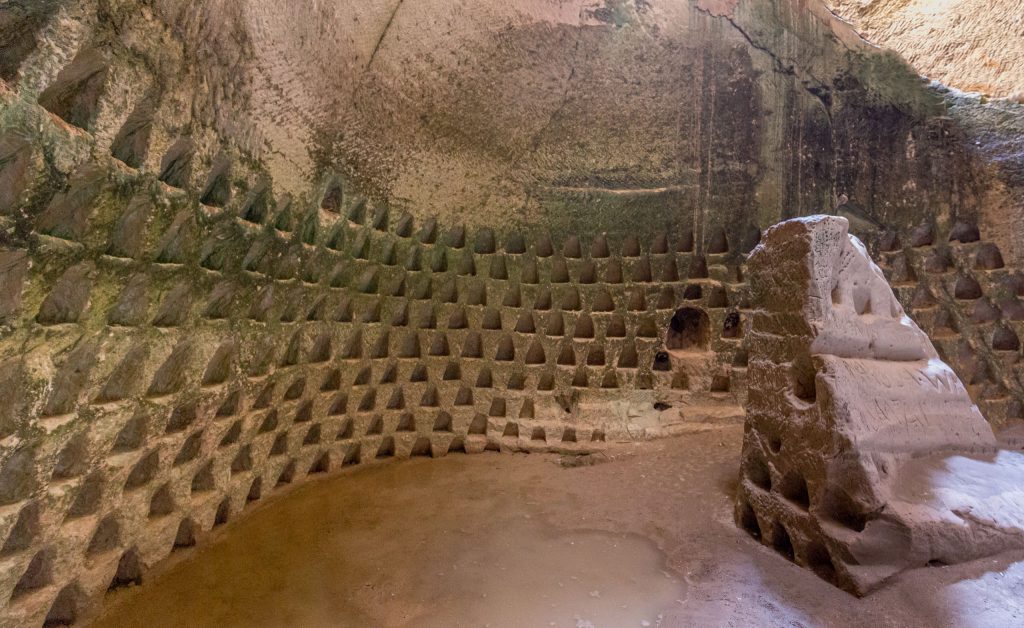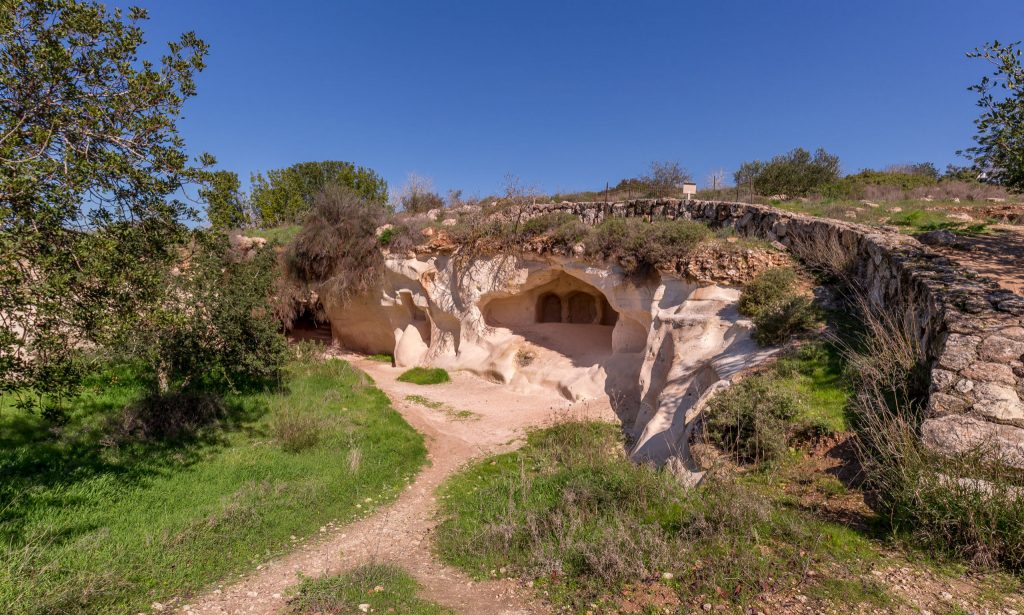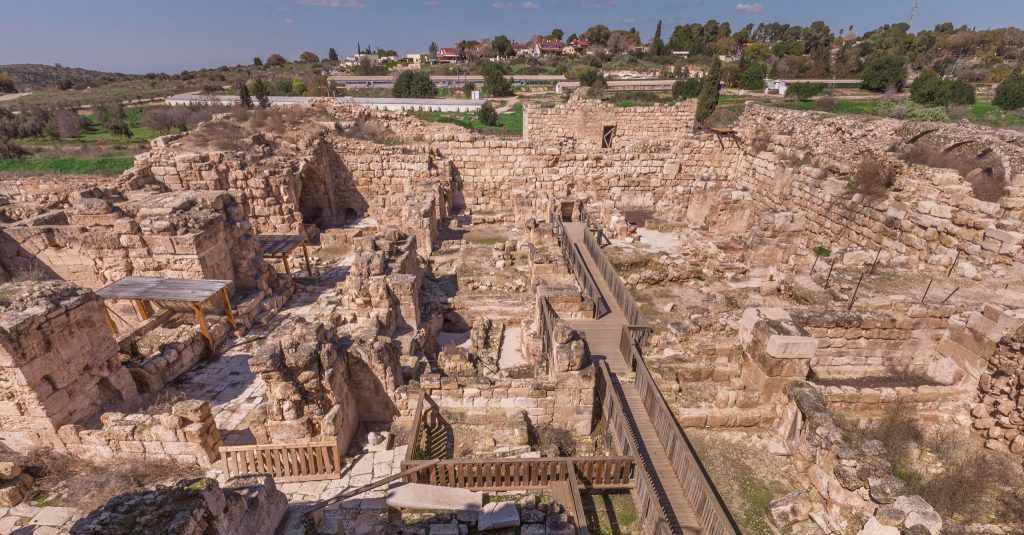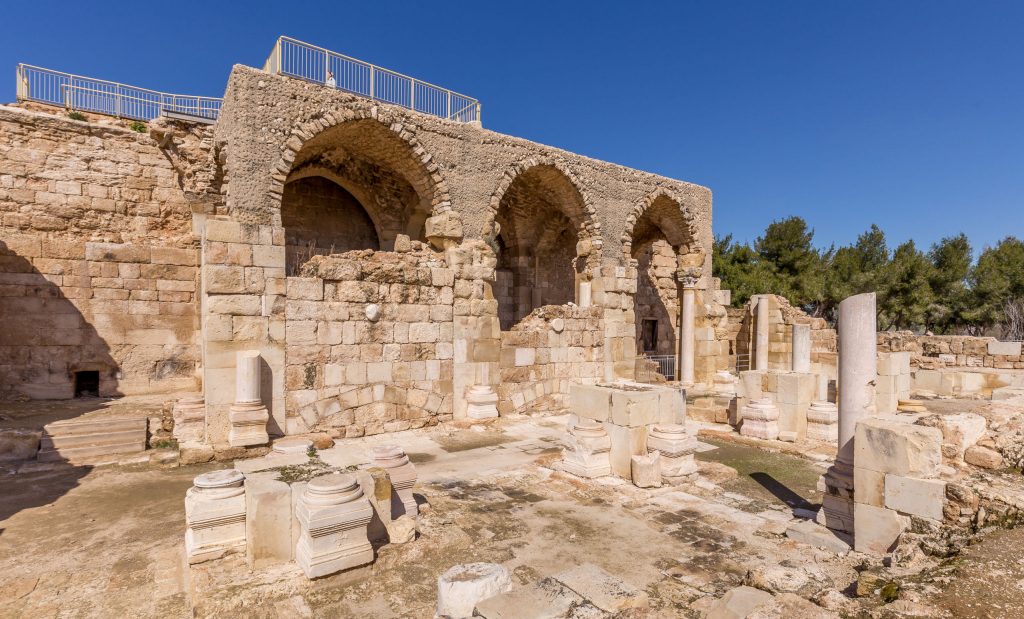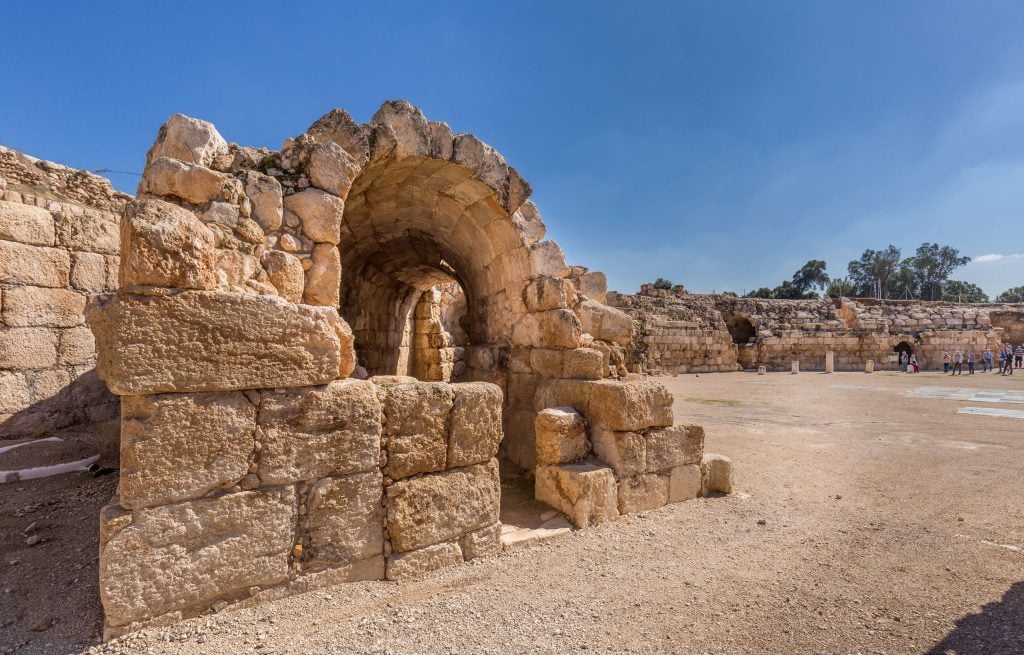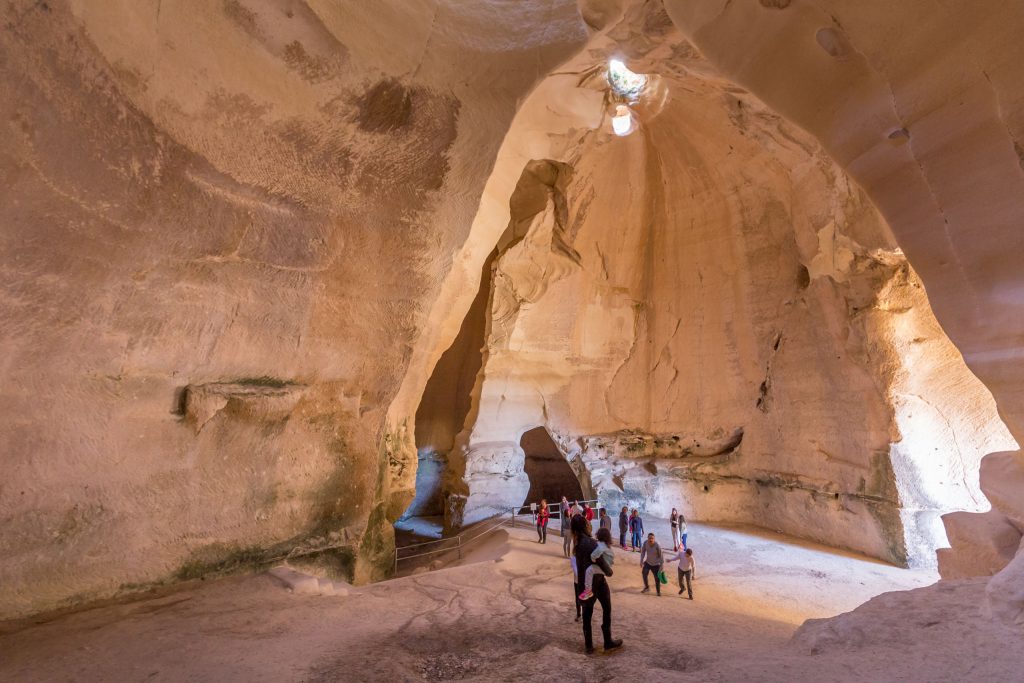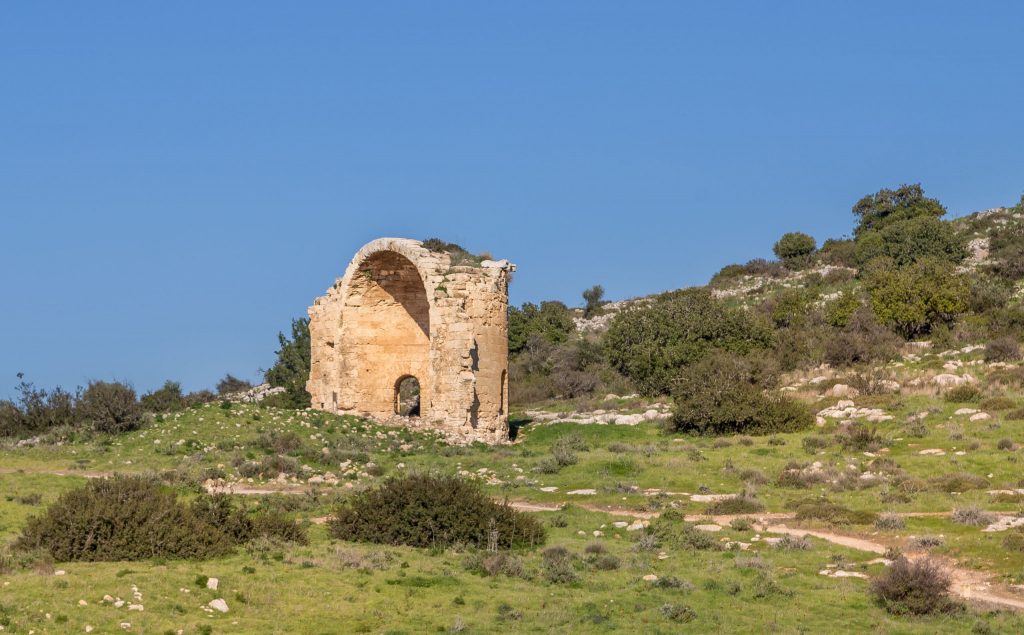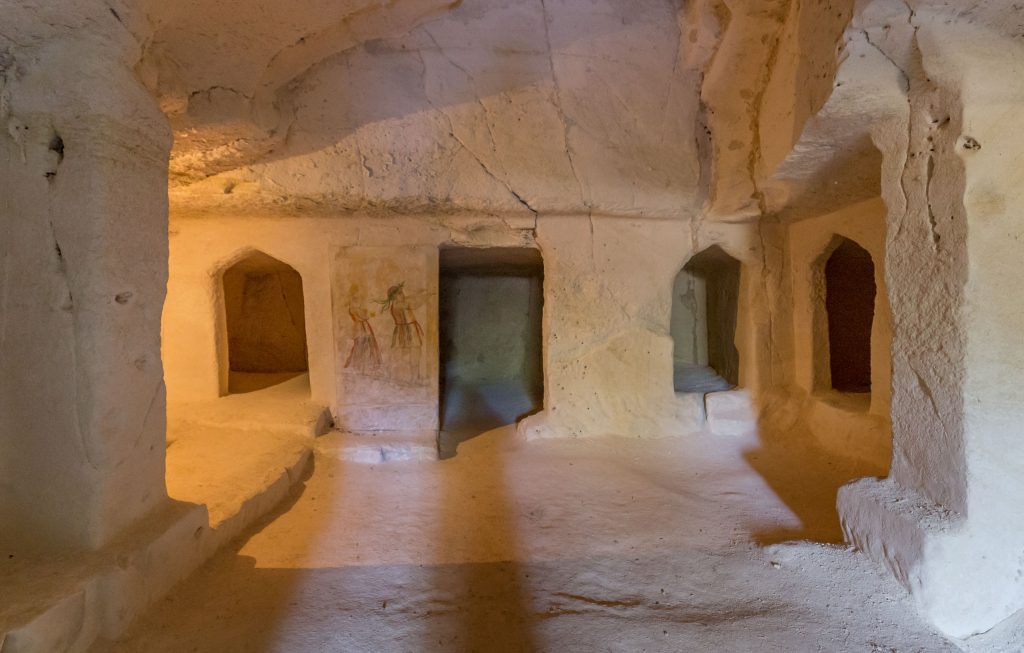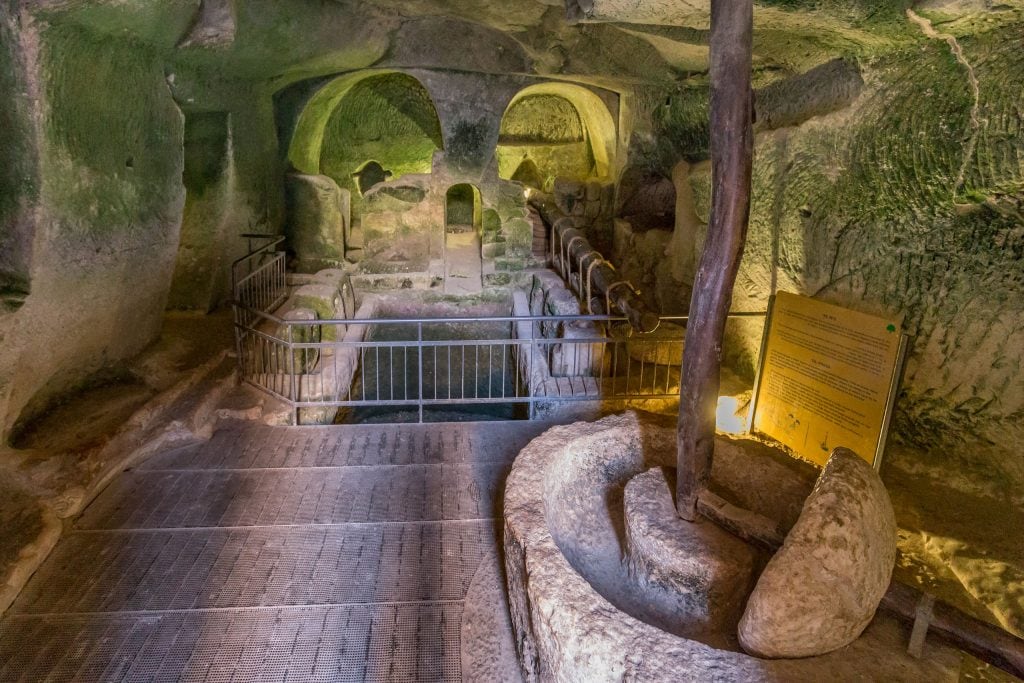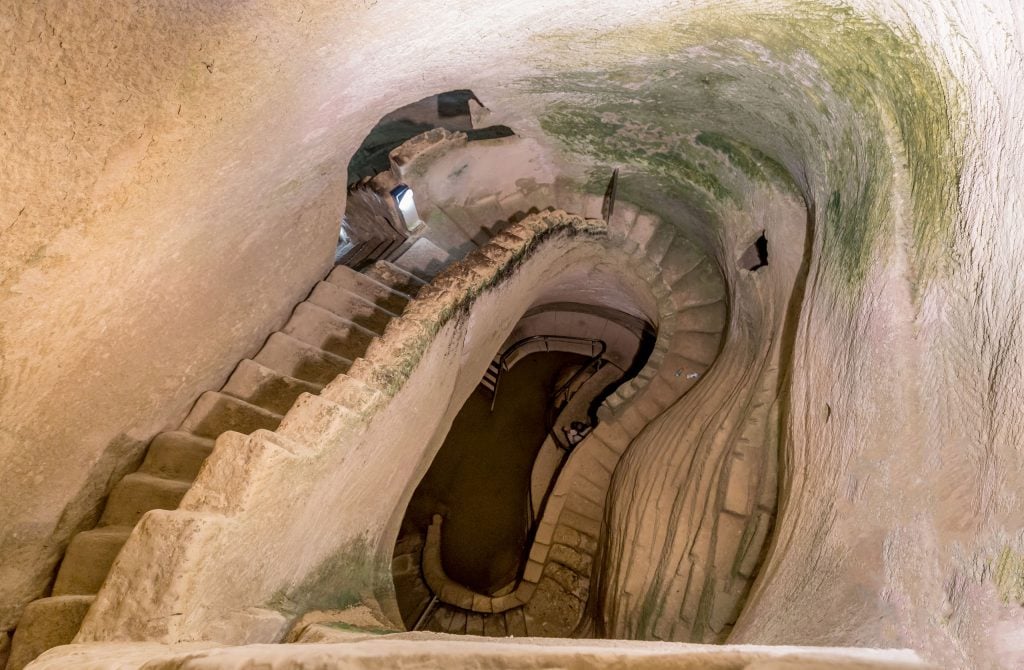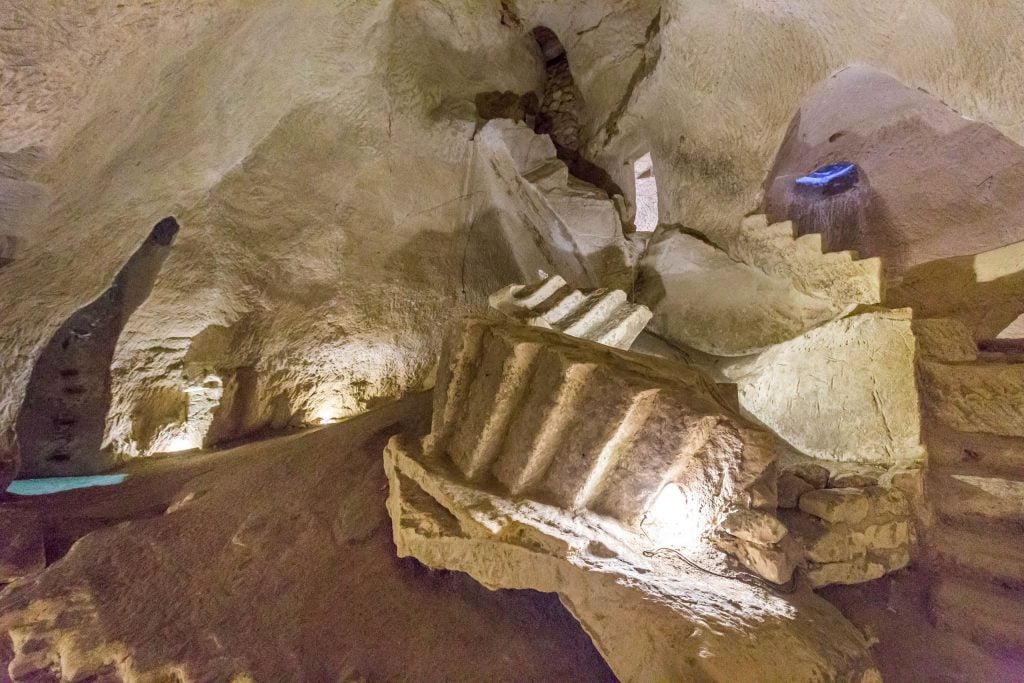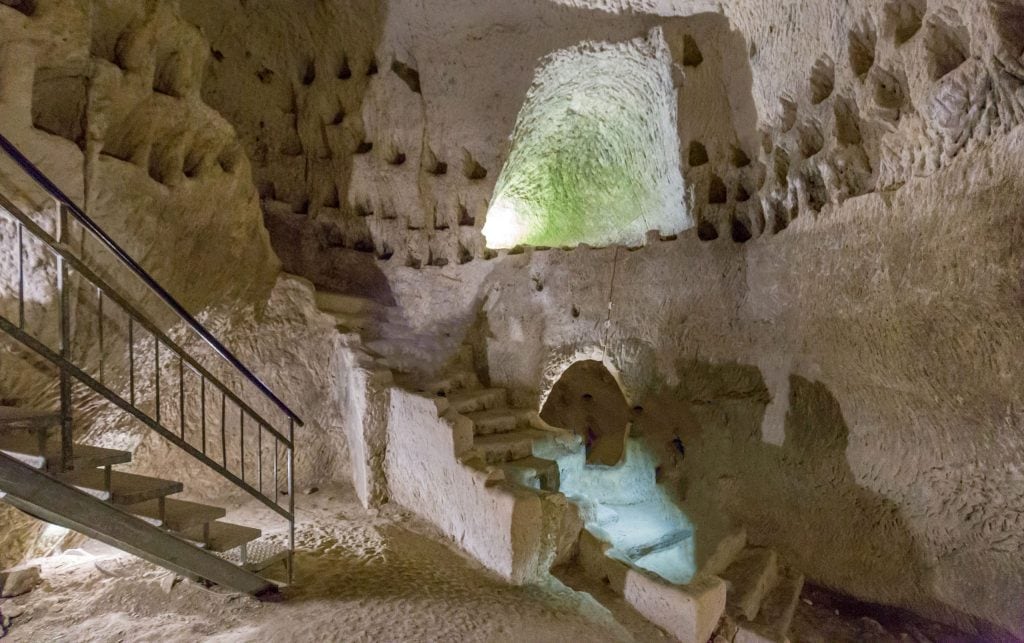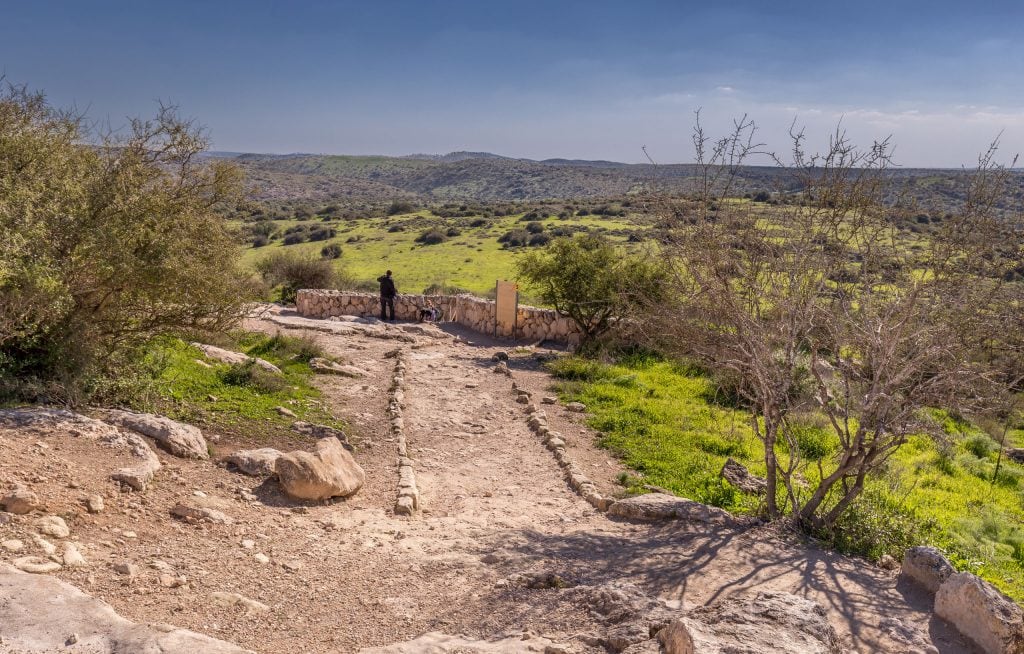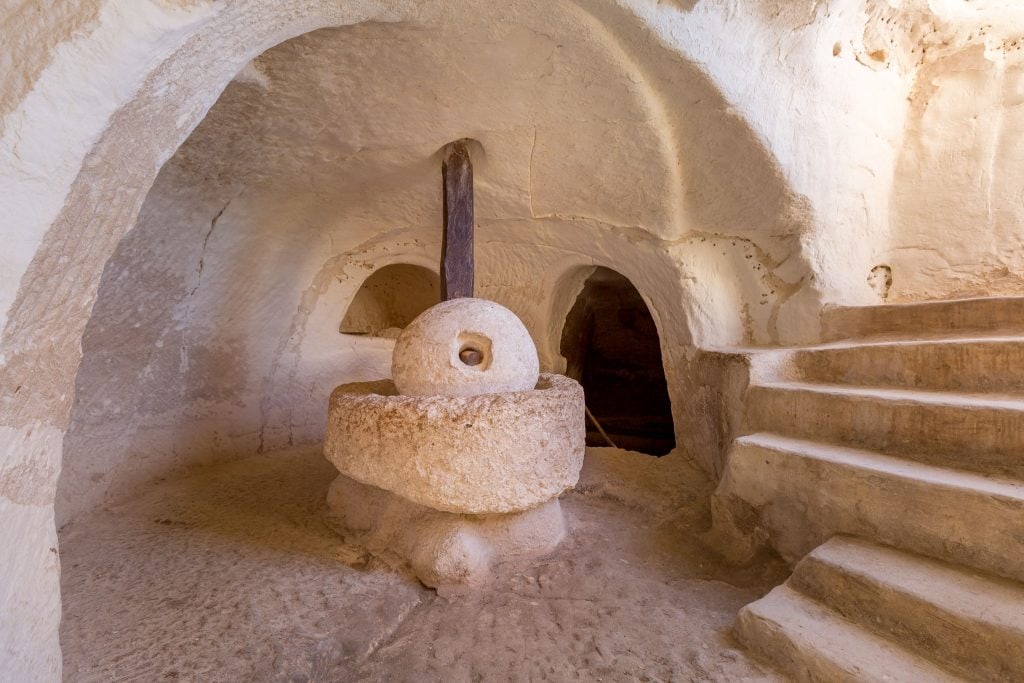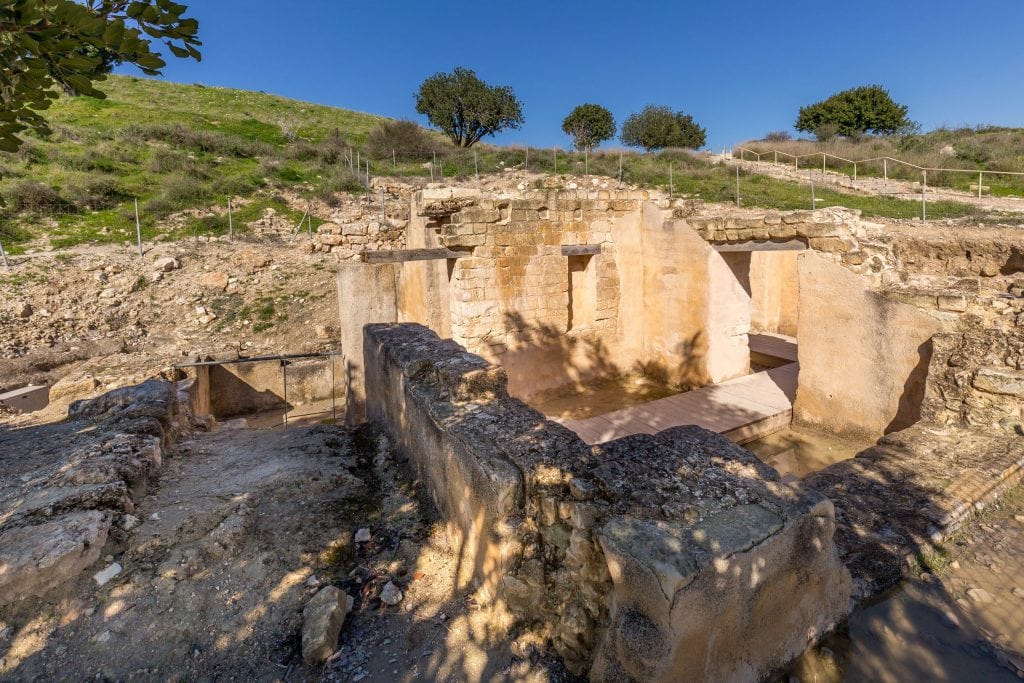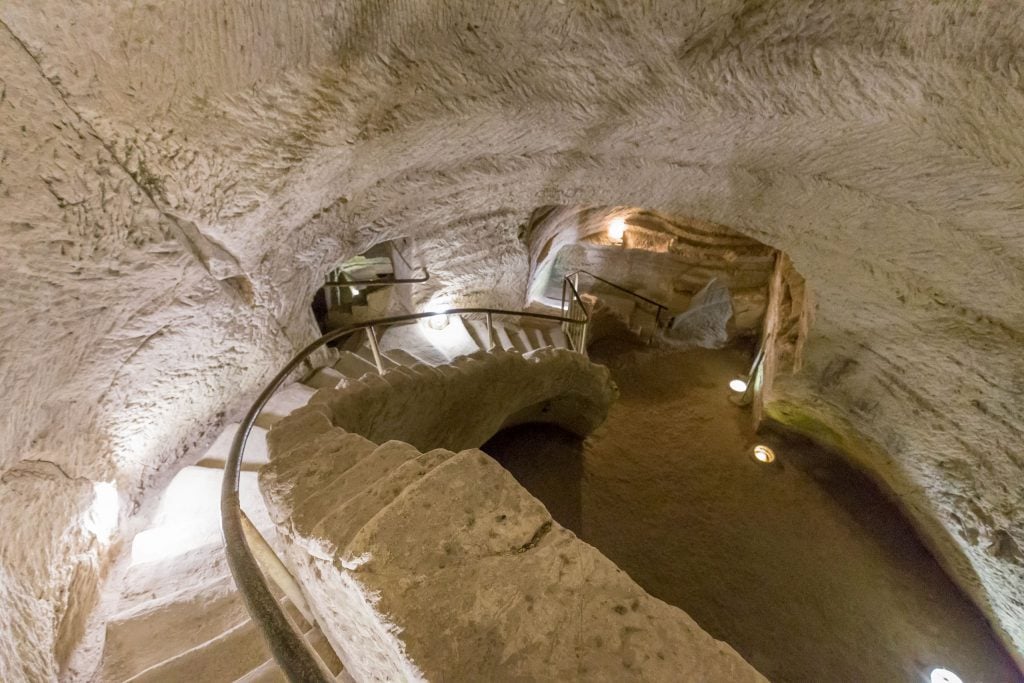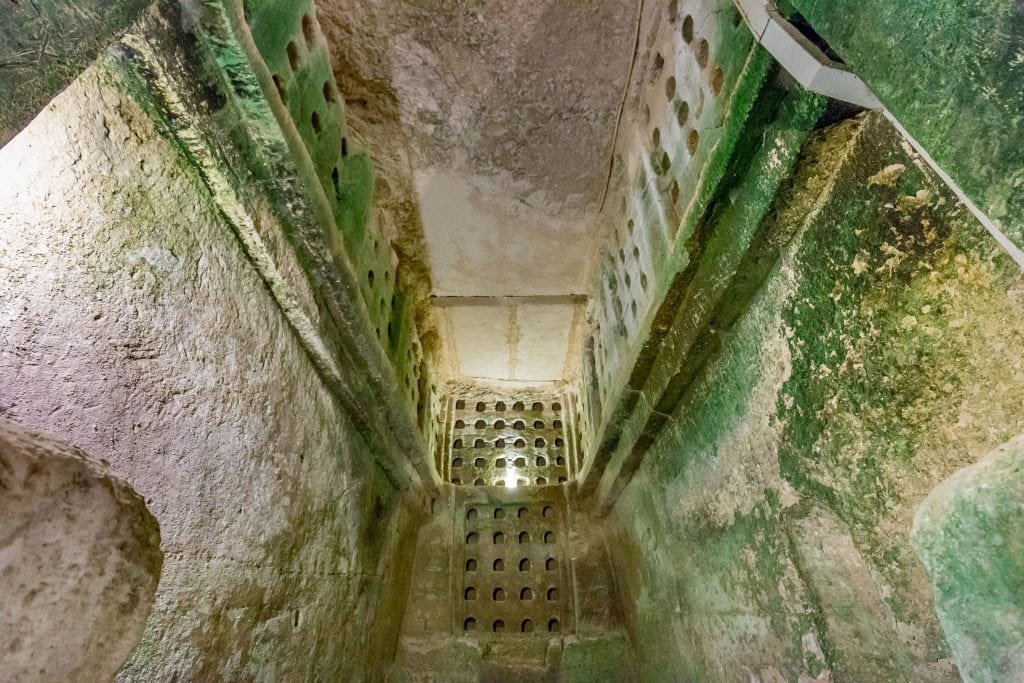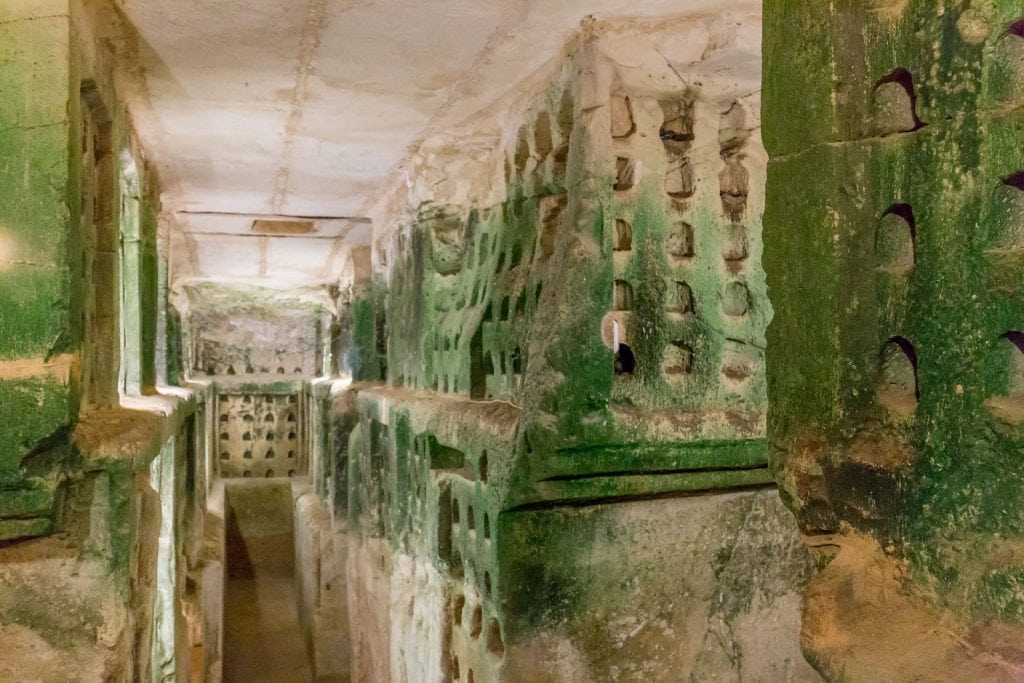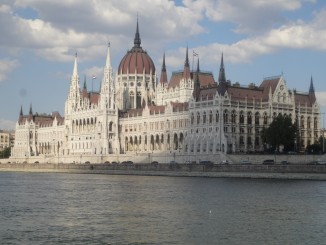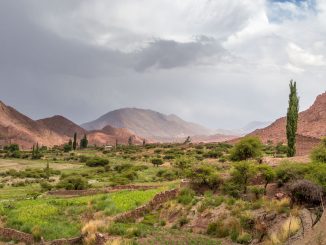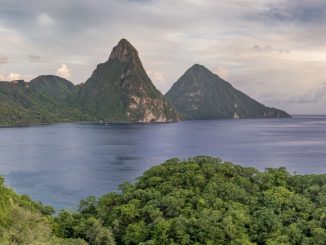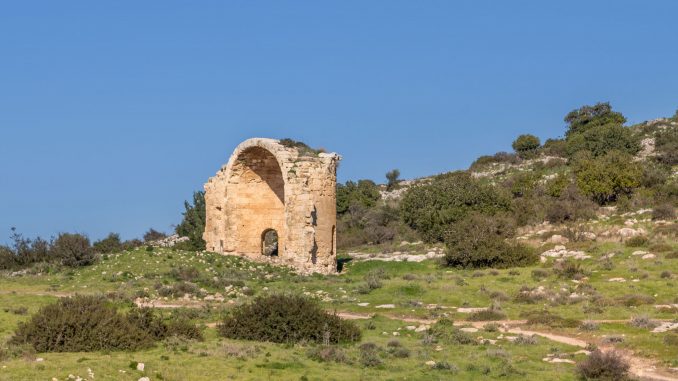
Table of Contents
The Beit Guvrin-Maresha National Park is located an hour drive south of Jerusalem or east of Tel Aviv and is a perfect day trip from either city. I visited it on the first day of my 10 day Israel itinerary on the way from Tel Aviv airport to Jerusalem. This UNESCO World Heritage Site is amazing in every way and I’ll show you why you must visit. You’ll see history from the Iron Age up to the time of the Romans and Crusaders. Don’t forget to bring a pick nick lunch!
National Park Beit Guvrin-Maresha
Beit Guvrin-Maresha is a national park in Israel and is divided in two with one part consisting of Roman and Crusader remains and the other larger part having all the cave complexes which date to the Iron Age. The day trip from Tel Aviv or Jerusalem is best started at the old Roman and Crusader remains. The park could be explored by walking the entire park but make sure you’ll have enough time.
ISRAEL – The best 10-day Israel road trip itinerary to Jerusalem, Haifa and Tel Aviv
I drove from major spot to major spot as most places of interest are clustered around 4 or 5 places with parking places. One thing I must warn you for: it looks small but below each entrance is a huge cave system which takes time to explore. The following picture illustrates a typical entrance but it does take 30-40 minutes to see all that’s underground. The road is a one-way drive so let’s go from spot to spot.
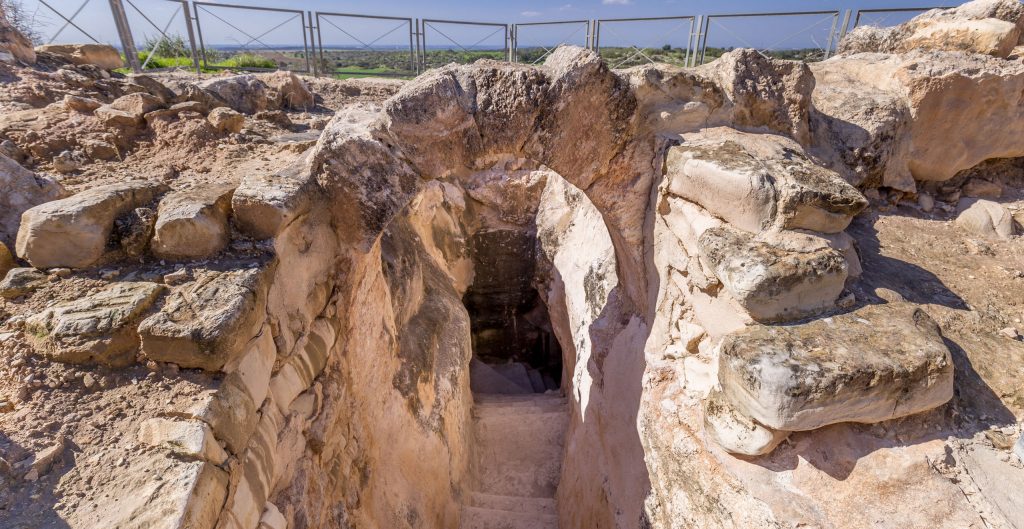
Beit Guvrin – Eleutheropolis
The Roman and Crusader remains are located across the road of the main entrance to the Maresha Tell. You can see here the archeological remains of the Roman amphitheater, a Roman bath house, a Crusader church, and the foundations of the Crusader castle.
Roman era remains
The city was first known as Beit Guvrin but renamed by the Romans in the 3rd century to Eleutheropolis. During the Roman reign the city flourished and became quickly the most important city in Roman Palestine. From that time, you can see now the amphitheater and the bathhouses. They are not the most beautiful Roman remains I have seen but are a very nice examples of Roman architecture.
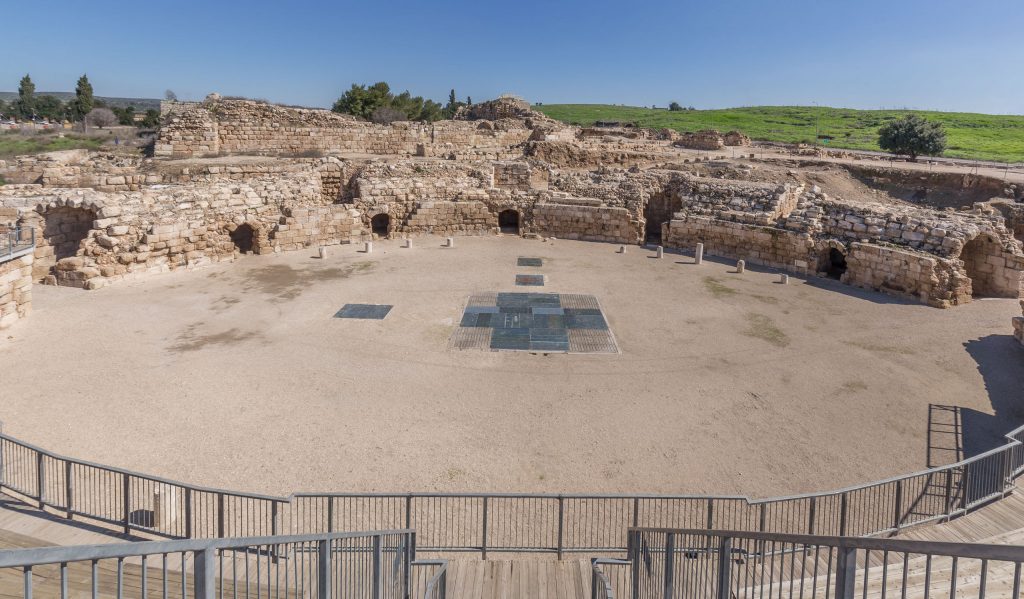
If you have read my article on Madaba (Jordan) you should have seen Eleutheropolis on the Madaba Map (a beautiful mosaic) which only shows important cities of that time. After the Romans, there was a Muslim era in which the city got destroyed but rebuild too.
Crusader era remains
In the 11th century the Crusaders took control when they formed the Kingdom of Jerusalem. They built a large Crusader fort at the place and the city changed name over time to Bayt Jibrin. After the Crusader rule the city became destroyed. Today, the remains in the park tell the history of a long-gone kingdom. From the Crusader period the church is the best preserved as you can see in the following picture. It takes just over an hour to explore the Roman and Crusader remains. Continue across the street to the more ancient Iron Age ruins of Maresha.
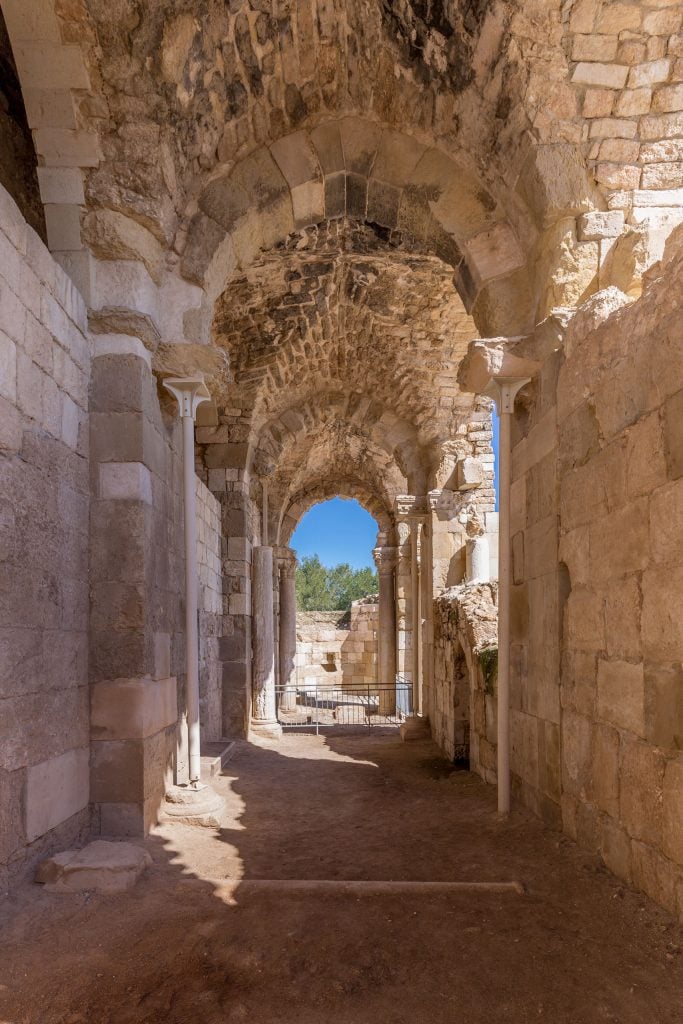
Maresha Tell
Maresha Tell is part of the Beit Guvrin-Maresha National Park and was once one of the most important towns during the period of the First Temple. All about the First Temple you will be able to read on my articles on Jerusalem which I will publish separate. Archeological excavations have revealed items dating to the dawn of the Iron Age up to the 1st century BC when Maresha was destroyed and never rebuilt.
Columbarium Cave & Bell Cave
When I first arrived I though the site would be small as just over 10% of the caves are excavated and the only thing you can see from far is a small hill, Tel Maresha. At the first stop, there are two cave systems which are relatively small. One is a bell cave (see below detailed explanation) where a columbarium is built into. The other is a straighter columbarium built specially for doves. During the Iron Age doves where held to fertilize the field and for food. After exploring these two caves I still thought I would have way too much time in the park; I was wrong, read on.
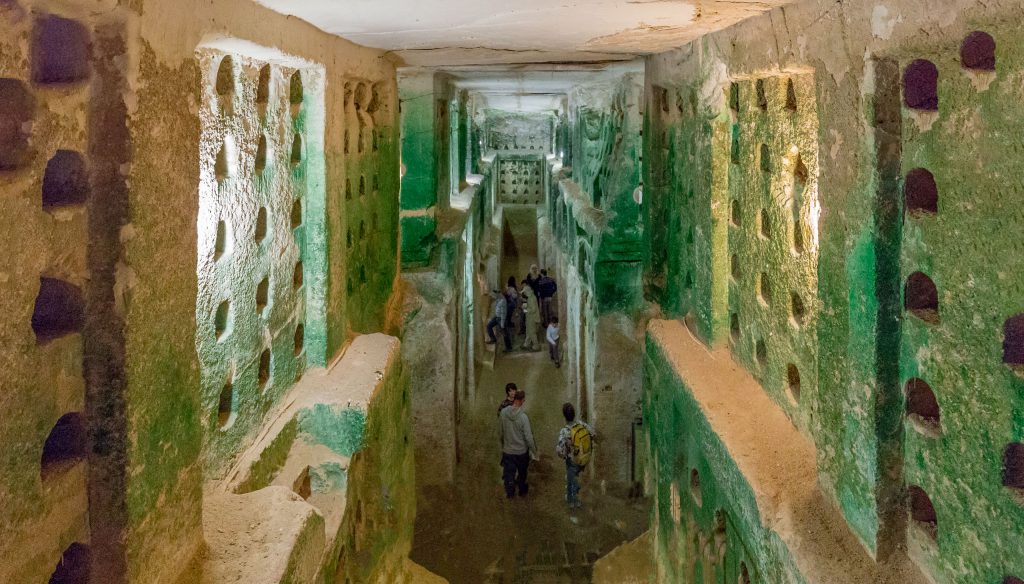
Oil Press Cave & Villa
The next stop changed my time schedule as the cave complexes became bigger and one took me at least 30-40 minutes to explore. Make sure you have a full day to not rush it. Below a small dwelling, you can see various cisterns and olive oil presses.
Maze Cave
Next up another cave system has large complex of cisterns, columbarium, and olive presses. A maze! It’s amazing to walk underground through these cave systems that date back to the Iron Age. Keep also in mind that by far everything is excavated and that much more caves exist of which many are linked together.
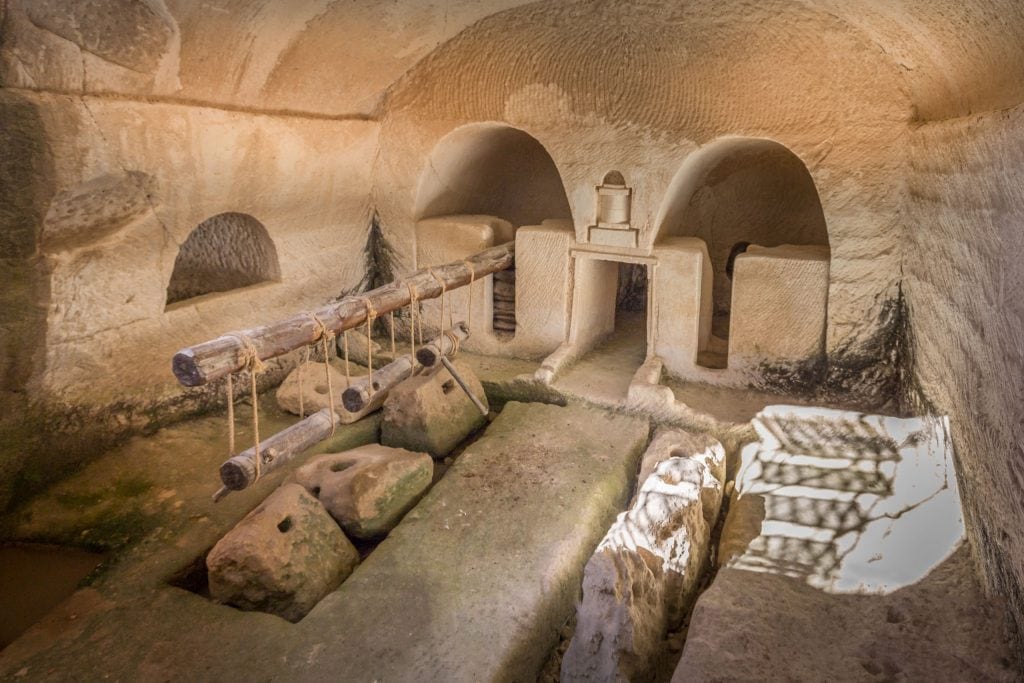
Sidonian Caves
The next stop of the Beit Guvrin-Maresha National Park has two burial caves with beautiful decorations. Today the decorations are stone slaps with copies of the original so that you can wander freely inside without harming them. These caves where the burial place for the important families that lived in Maresha. The paintings consist mainly of animals in the larger cave and a musician in the musician cave. Although they are copies; they give a good view into the burial ceremonies of that time.
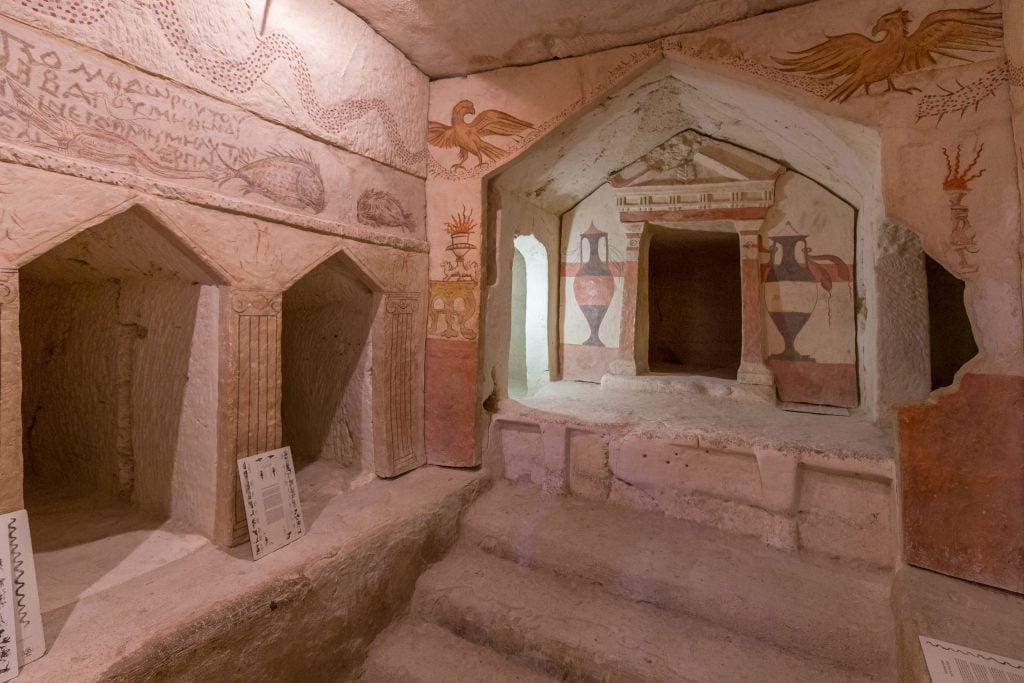
Just before the last spot you’ll see a Byzantine chapel (St. Anne’s Church) which is the only place a bit out of the way if you drive.
Bell Caves
The last stop are quarries (called Bell Caves) from where stones were cut to build houses and streets. They date to the early Arab period. You’ll see small openings at the top of the caves through where the rocks where taken out. The first three meters of soil where not used as it was too soft so that’s why there is the small opening. The reason of the caves having the shape of a bell is because each layer of rock taken out was a bit wider and this shape made sure the structural integrity wasn’t compromised. At various places, you can see the cut marks of each layer; these rocks where huge!
ISRAEL – The best 10-day Israel road trip itinerary to Jerusalem, Haifa and Tel Aviv
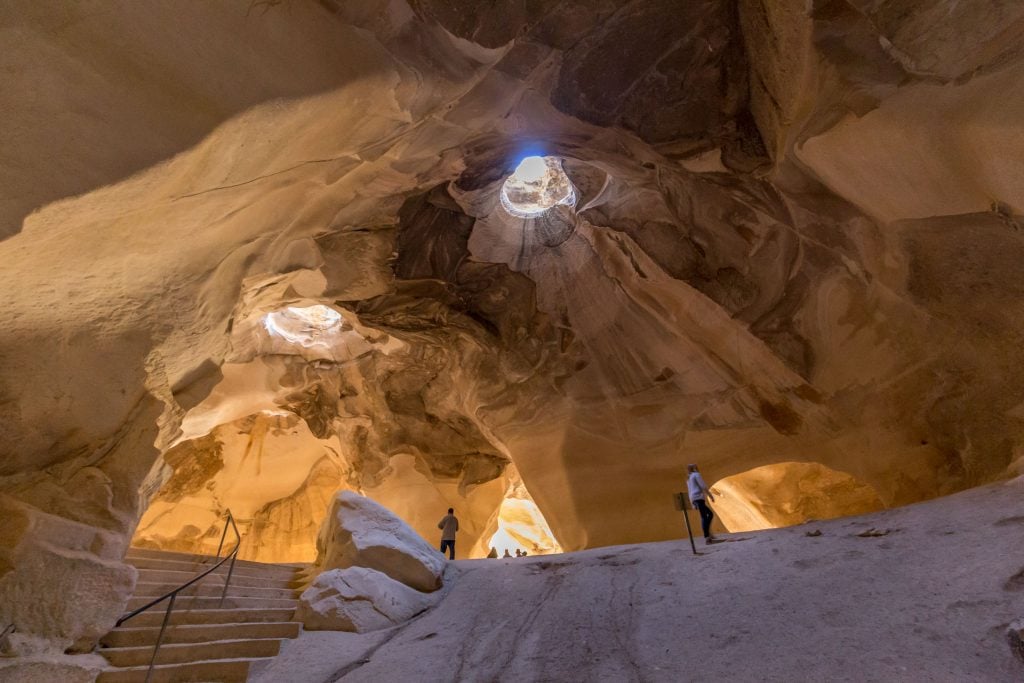
The Beit Guvrin-Maresha National Park is a place different than anything I had seen before. I fully agree with its UNESCO World Heritage Status and I can recommend everyone to visit. I didn’t bring any lunch but I do suggest taking a pick nick lunch as there are lots of places to relax and sit down. It was Shabbat and that’s probably the reason the park was a bit crowded with families but that shouldn’t keep you from visiting. Beit Guvrin-Maresha National Park was my first experience in Israel and I enjoyed it; it was late afternoon when I drove to Jerusalem. After Jerusalem, I also visited Haifa and Tel Aviv; more on those places later.
Stay tuned for more stories and subscribe to the newsletter or follow CTB on social media (Facebook, Twitter, Instagram including Instagram stories; on all social media you can find CTB @christravelblog) to get updated information.
Did you visit the National Park Beit Guvrin-Maresha in Israel too or do you have questions? Please leave a comment at the bottom of the page. Love to hear from you!
Gallery Beit Guvrin-Maresha
Click an image for a full screen gallery of more photos taken during this trip. If you like to use any photo for commercial, private or editorial use please contact first for permission and/or pricing.


